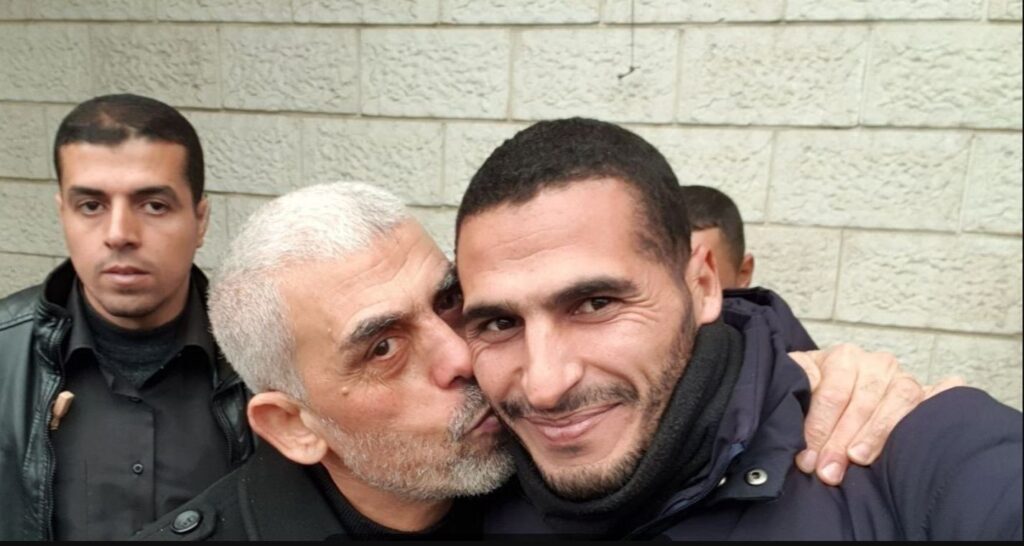Screenshots obtained by HonestReporting showed Eslaiah in front of the Israeli tank without a helmet or press vest.
The watchdog also said that it seemed the AP had deleted the freelancers’ identities from a few images in its database.
The freelancers took pictures of militants from Hamas kidnapping individuals and an Israeli tank that was on fire.
According to an extensive analysis by HonestReporting, the deployment of freelance photographers who documented some of the attacks carried out by Hamas terrorists in southern Israel on October 7 for AP and Reuters has raised serious concerns about their level of knowledge and the timing of their presence during these events, which resulted in the deaths of over 1,400 people.
Six freelance photographers were identified by the watchdog as being present during the attacks: Hassan Eslaiah, Yousef Masoud, Ali Mahmud, Hatem Ali, Mohammed Fayq Abu Mostafa, and Yasser Qudih. The Associated Press and Reuters are distributing their photos to other newspapers.
Given that it was the Jewish festival of Simchat Torah, HonestReporting wondered why these photographers were at the scene on what should have been a normal Saturday morning. Questioning if their presence was coordinated with Hamas, they also wanted to know whether the credible wire agencies that released their images knew about and approved of their presence in enemy land with terrorist infiltrators.
Photographs taken by these freelancers showed an Israeli tank on fire and Hamas militants kidnapping victims, among them the German-Israeli lady Shani Louk, who was subsequently discovered dead.
Journalists without borders pic.twitter.com/MOAbixWozt
— עמית סגל Amit Segal (@amit_segal) November 8, 2023
Who is Hassan Eslaiah?
Additionally, deleted social media images of Hassan Eslaiah in front of an Israeli tank without a press vest or helmet were discovered by HonestReporting. The image’s Arabic caption said, “Live from inside the Gaza Strip settlements.”
The watchdog also brought attention to the fact that the identities of the freelancers seemed to have been erased by the AP from some of the images in its database, raising possible ethical questions for journalists.
Mostafa took pictures for Reuters of a lynch mob “brutalizing the body of an Israeli soldier who was dragged out of the tank,” according to HonestReporting. The news organization astonishingly included the picture as one of its “Images of the Day” in its editorial database, along with a graphic warning.
The research highlights concerns about the conditions in which these photographers worked while acknowledging the complexities of journalists’ duties in reporting war crimes. The assault on October 7, considering its scope, harsh goals, and copious documentation, seems to have been well organized by Hamas. It also raises doubts about whether the presence of these “journalists” was accidental or a part of a wider scheme.
The article’s conclusion emphasizes the need for openness and raises questions about standards when foreign news outlets acquire material shot under such problematic situations. It is difficult to distinguish between ethical journalism and immoral behavior if these journalists worked with Hamas to get these photographs, whether directly or indirectly.







